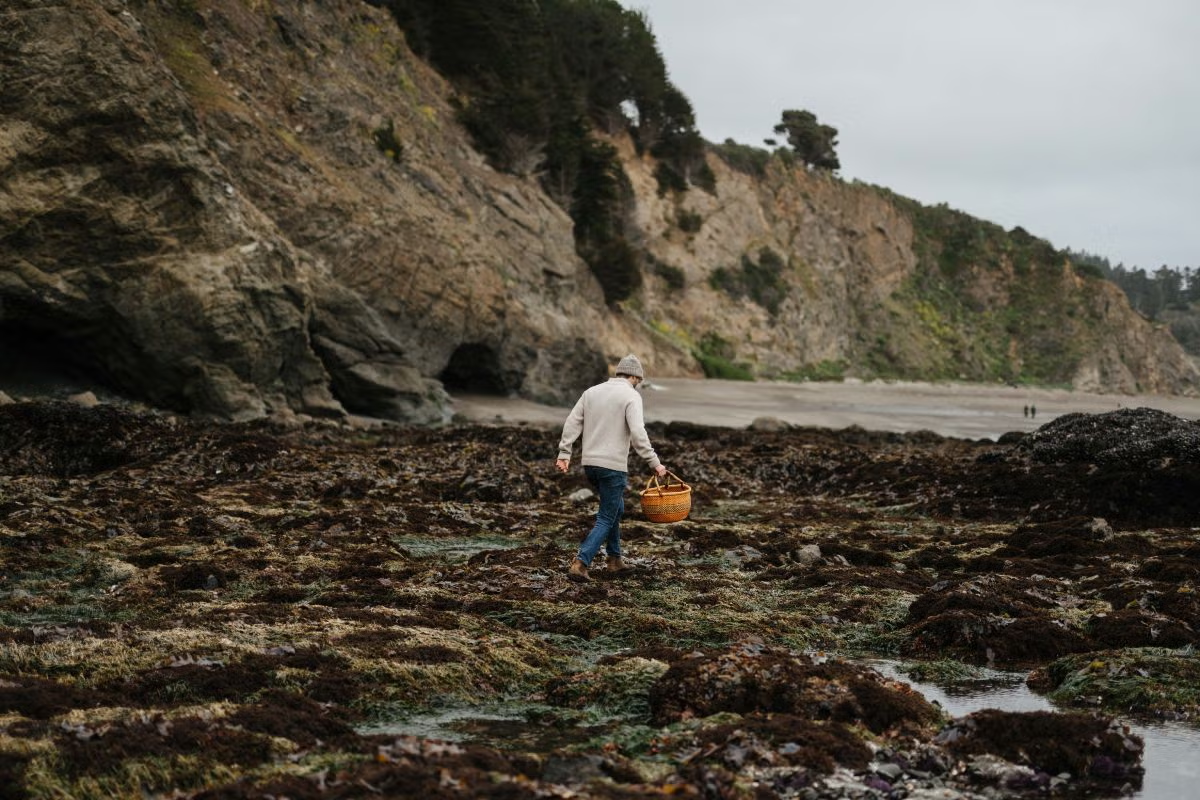Harbor House Inn is the ultimate hidden gem. The 20-seat restaurant needs to be extraordinary to lure diners three hours north of San Francisco to Elk, California, and the storybook views of the rugged Pacific Ocean dotted with tidal pools, rock formations, and occasional whale sightings from the redwood dining room are accompanied by an unforgettable meal.
From seaweed sourdough to fresh sea cucumber and delicately steamed abalone, chef Matthew Kammerer captures the very essence of this coastal destination and moment in time on the plate, surrendering to nature and allowing regional flora and fauna to steer menu development. Each element of the meal is sourced as locally as possible, including ceramic plates and bowls by Cliff Glover and nine different sea vegetables foraged from the inn's private beach. After we speak, Kammerer intends to pick wild ginger near a waterfall across the street from his house before service.
While many restaurant locations these days are strategically determined with the help of AI and careful analysis of population density, competitors, and real estate valuations, Harbor House was essentially a manifestation. Kammerer drove up and down the West Coast looking for the perfect spot for his own restaurant. He jotted down his vision in a notebook—10 rooms, near the ocean, a historical building, somewhere he could grow food. “When I walked in for my tour, I began laughing as it was perfect for what I had envisioned, almost surreal,” he says.


















